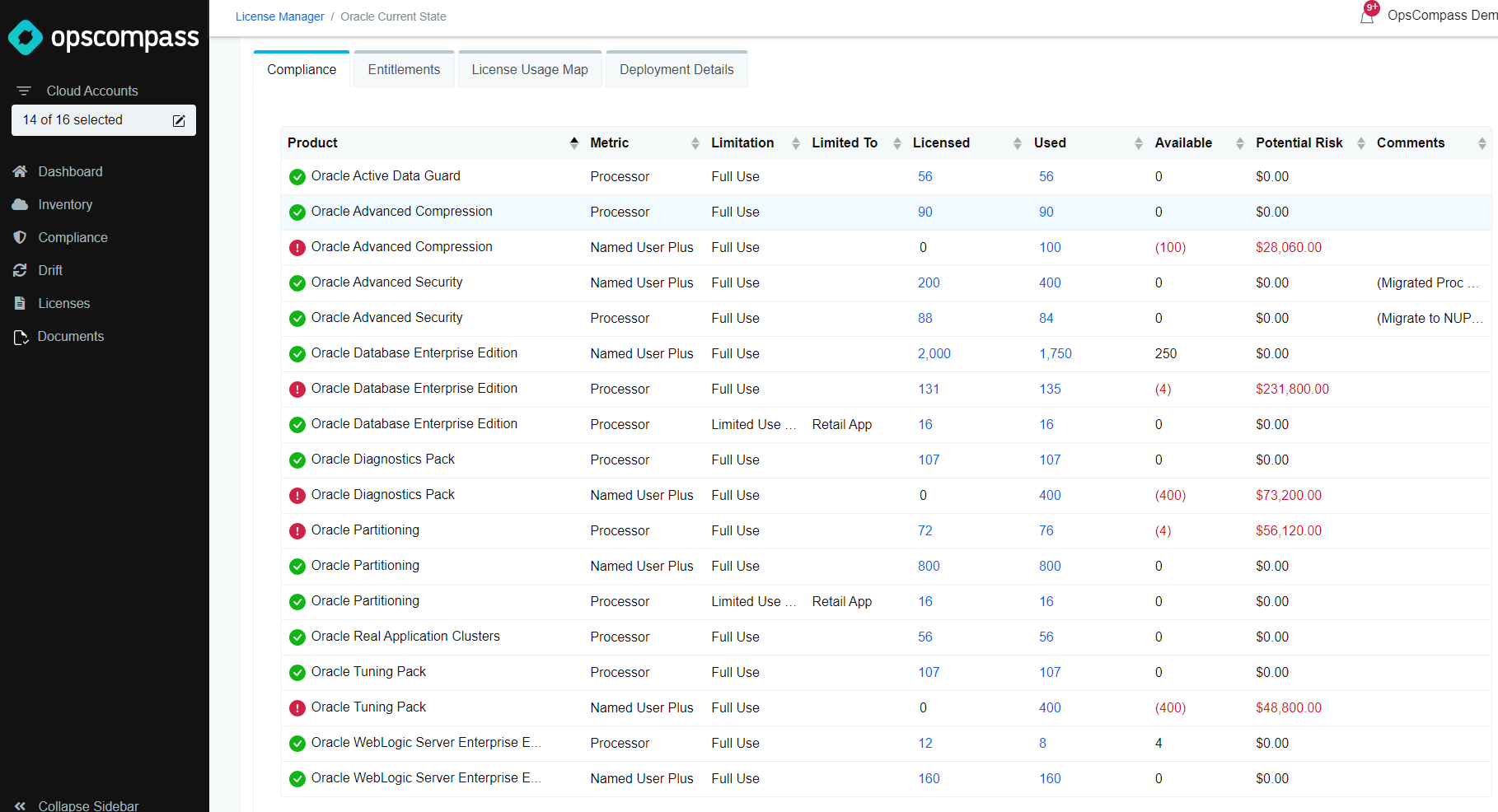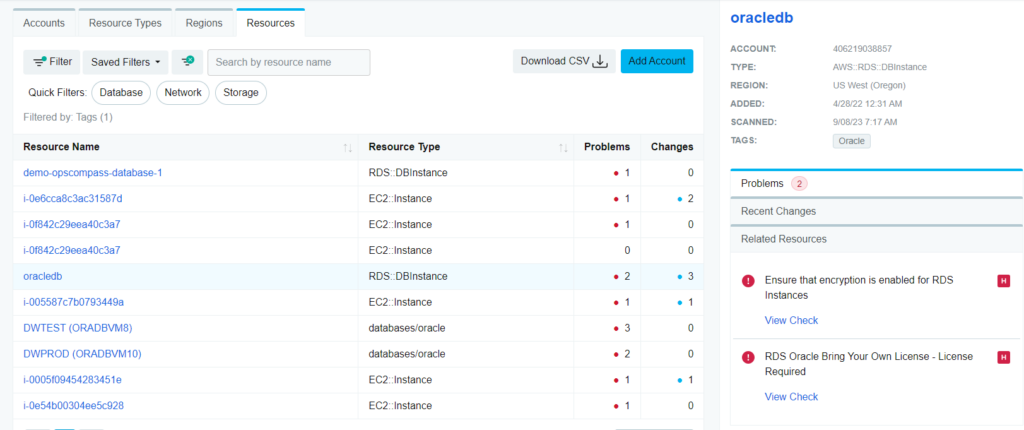Introduction
Today, organizations of all sizes are migrating their databases and applications to cloud environments to provide enhanced scalability and cost-efficiency. Now with more organizational cloud-maturity, enterprises have begun to migrate crucial business applications, such as Oracle, into cloud platforms like Amazon Web Services (AWS). However, as an organization’s Oracle footprint on AWS expands, managing the inherent Oracle licensing and compliance risks at scale is crucial to successfully managing your risks while realizing the cloud’s benefits.
A Brief Overview of Oracle on AWS
When deploying Oracle databases on AWS, your infrastructure options are to utilize Amazon RDS, a managed cloud database service, or Amazon EC2 which is a more traditional compute/virtual machine service. Running Oracle on Amazon RDS allows you to offload database administration tasks to AWS, reducing operational risk. Alternatively, with Amazon EC2, you have more flexibility and control over your instances, ideal for custom applications. Understanding your infrastructure well is critical to managing risks associated with licensing, security, and cost risks.
The Oracle Licensing on AWS Basics
Often the most significant risk associated with running Oracle database on AWS is related to Oracle license compliance. With different deployment options and capabilities like rapid scaling, your Oracle license posture can be hard to understand. In AWS you can either bring your own Oracle license or opt for AWS RDS instances that have a license included option. Licensing Oracle on AWS is based on the number of vCPUs used. Oracle counts two vCPUs as equivalent to one Oracle Processor license if hyper-threading is not enabled. You can find a deeper dive into Oracle licensing on AWS here.
Addressing Oracle Licensing Risk at Scale
To minimize the risks of Oracle license non-compliance, here are some effective strategies you can implement:
1. Regular Oracle Database and Infrastructure Monitoring: Constant tracking of your AWS instances and ancillary components, Oracle feature usage, and your available Oracle license entitlements helps you manage unexpected costs or compliance issues. We leverage the OpsCompass platform which enables all of this in one place and, as you can see in the screen below, you’re able to continuously track compliance across your Oracle footprint.

2. Continuous Oracle License Management: Use OpsCompass to help manage Oracle entitlements, licenses and feature usage across multiple AWS accounts, Regions, and even in on-premises infrastructure. Doing this well drastically reduces the risk of non-compliance, overconsumption, and unexpected costs.

3. Automated Inventory and Discovery of new Instances of Oracle: You can’t monitor and protect what you can’t see. Having an ability to automatically discover new instances of Oracle database in your AWS environment, removes the human element from the process and allows you to close the loop on your monitoring and license management processes at scale.

Reducing Risks with Expert Guidance
It’s possible to stay within the bounds of Oracle’s licensing constraints, and if you can do it, you’ll benefit significantly from the inherent scalability and overall capability of AWS. However, navigating through Oracle licensing, especially in the cloud, demands deep expertise on the subject. House of Brick has been involved in hundreds of Oracle audits and saved customers billions of dollars in fees to Oracle. Combining technology and automation with real expertise around Oracle licensing and audit defense helps companies of all sizes minimize their risks and maximize their investments in both Oracle and AWS technology.
While AWS empowers enterprises to scale with relative ease, managing Oracle licensing risks and defending against audits must have a primary role in your cloud strategy. Regular monitoring, effective policies and management, and expert guidance together build a robust shield against potentially severe risks.






